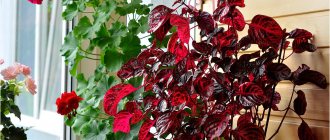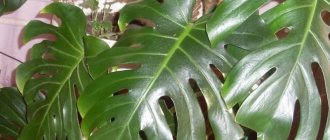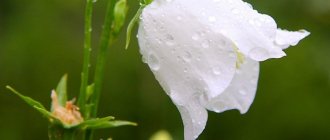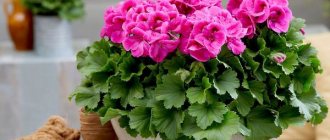Non-flowering houseplants
Non-flowering plants are plants that are grown for their beautiful leaves or generally for their attractive appearance. The leaves of such plants can be of different colors and shapes. Typical representatives: ficus, dracaena, succulents.
Small indoor flowers
Ficus
One of the most interesting representatives of non-flowering plants is considered to be indoor ficus. Surely, those who were lucky enough to vacation in any Mediterranean country have seen large glossy leaves on interesting spreading trees. The indoor version of the ficus also looks very elegant. In nature, there are many species of this plant; there are approximately 20 indoor varieties. The most famous is the rubber-bearing ficus , which is rightfully considered a long-liver and, with proper care, can please the inhabitants of the home for about 50 years.
Although ficus trees are relatively easy to grow, they do have some special needs that you'll need to pay attention to. Here are a few things to consider when considering growing a ficus as a houseplant.
- Light. Ficus loves bright, indirect sunlight and lots of it. Your plant will enjoy spending time outside in the summer, but protect the plant from direct sunlight if it is not acclimatized. In winter, keep the plant away from drafts and do not allow it to remain in a room with a temperature below 10-16°C.
- Watering. Ficus needs constant but moderate watering throughout the growing season, with dry periods in winter. Make sure the soil is just moist and not dry or soggy, but reduce watering in winter. Your plant will most likely lose leaves during the winter drought. Hanging ficus trees are especially susceptible to over- and under-watering. Foliar sprays can provide additional moisture during droughts with less threat of root rot. Well-draining soil is essential to keeping these plants healthy.
- Transfer. Ficus grows quickly and can easily become too large for your home if you repot it frequently. Limit potting to once every two years to control your plant's growth.
Ficus rubbery
Ficus benjamina, or weeping fig, is also popular. It's known for dropping its leaves and is generally easy to grow—as long as you don't move it. Ficus prefers to stay put. In fact, the seemingly simple and harmless act of moving it from one corner of the room to another, or even a few meters for that matter, can cause it to lose its leaves.
A piece of history and features
The most beautiful indoor flowers: photos and names (catalog)
All over the world, coltsfoot is known for its healing properties. Ancient ancestors squeezed the juice of the plant, mixed it with honey and took it as an antitussive. The dried leaves and inflorescences of the plant are still used to treat coughs, choking, toothache, to improve appetite and for other purposes. Fresh coltsfoot leaves are applied to wounds, calluses, bruises, and the juice is dripped into the nose or gargled. The medicinal plant should be collected away from roads and industrial facilities, and stored in dried form for no more than 2 years.
This unique plant grows almost everywhere. It can be found in Eastern Siberia, North America, Western Europe and even Africa.
Decorative foliage plants
Decorative foliage plants include plants that have unusually shaped leaves with interesting colors. There are many types of these plants, which differ in appearance and features of caring for them. Selaginella and asparagus , for example, can be recognized by their needle-like dissected greenery.
There are also plants that bloom with small flowers and turn into an original scattering of berries. The most famous representative of this species is the nightshade, which in England is one of the symbols of Christmas.
Reproduction of decorative foliage plants can occur in different ways. For example, Helxina mossy can be rooted by transferring a lump of soil with the plant to a new flower pot. Some types of ficus reproduce using green layering, and tubers are the subject of propagation by caladiums.
What flower blooms without leaves - Cottage, garden, vegetable garden, indoor plants
I met them for the first time as a child in a botanical garden and was very surprised: it was October, windy, cold, rainy, the leaves had long since turned yellow, and here were spring flowers. “These are the experts who made spring flowers bloom in autumn!” - gardener's thoughts...
It turned out that these are not botanists, but nature once again surprises.
These plants are called crocus (Colchicum) because the majority of species and varieties have a very unusual development cycle: leaves appear immediately with seed pods in the spring, seeds ripen in early summer, the leaves turn yellow and die, the plant sleeps in the summer, and flowers without leaves bloom in the fall. .
Colchicums, or colchicums (the name is given from the area where several species of this flower grow), are corms. Their corm is 5-6 cm in diameter, covered with a dry brown shell.
In autumn, a 15-18 centimeter perianth with an elegant flower emerges from the ground, fused into a narrow tube. The flowers appear completely without leaves; for this feature the British call the plant “naked lady”.
Colchicum is an unusual flower not only in terms of its development cycle. He made significant contributions to science. Substances—alkaloids—were isolated from the plant, the study of which gave rise to a new branch of organic chemistry.
And in genetic engineering, thanks to the crocus alkaloid colchicine, methods have been developed for obtaining new plant varieties that are larger in size due to the doubled number of chromosomes.
Depending on the species and variety, one colchicum corm can produce a different number of flowers. They can be simple or terry.
And the color varies from white to all shades of lilac-lilac and pink. Checkerboard and striped varieties are also sometimes On cloudy days, the flowers close and stand in beautiful glasses.
Colchicum blooms for about three weeks, depending on the weather: in hot autumn the plant fades faster. He is not afraid of frosts; they can only cause him to lie down on the ground. Pollination occurs with the help of insects; the ovary is located in the corm, at the base of the flower tube.
And the three-lobed seed pods with round seeds at the base of the leaves will be visible only next spring. Therefore, another name for the plant is “son before father.”
In the middle zone they grow well and do not require shelter b. Bornmueller, b. magnificent, b. gigantic, b. autumn and b. dark purple
Fresh colchicum seeds can be sown immediately and seedlings can be obtained in the next season, and after 5 - 7 years - full-fledged flowering plants.
The leaves grow only in spring - oval-elongated, glossy, beautiful bright green, erect, about 30 - 40 cm tall.
In colchicum, simultaneously with the development of leaves, a new, young corm grows, replacing the old one. Sometimes not one, but two or three new corms are formed.
In June, the leaves begin to turn yellow, dry out, and the plant goes dormant until September. At this point, it is recommended to replant the colchicums.
Experienced gardening advice! Plants can be replanted at other times. Somehow I didn’t have time to dig them up in the summer and dug them during flowering (it became not very abundant - a sure sign for the colchicum that it was time to plant it).
From one plot measuring 40x40 cm, I dug up half a bucket of corms with numerous thin roots. Some corms were small and had no flower stalks. I planted some of the plants in their original place, having previously replaced the soil there and added compost and sand. The rest were planted in other parts of the garden.
In the spring, all the planted plants gave leaves, and in the fall the large bulbs bloomed together. experienced advice from a gardener.
When dug up during the dormant phase, colchicum does not require storing the corms until autumn; they can be immediately planted in the prepared place.
They are buried at three heights of the corm and in a sandy “shirt” (it is advisable to put sand on top and bottom of the bulb).
When planting, you must remember to pay attention to the correct location of the corm: plant with the long tube up, and the beak-shaped outgrowth with the renewal bud (this is the future corm) down. Colchicums are planted in moderately rich soil.
Colchicums appear on sale in garden centers in August - September. On store shelves you can often see sprouted corms without roots, but with flowers.
Don’t be afraid to buy such plants - they are quite viable and, when planted in the garden, will delight you for many years. Moreover, when purchasing flowering corms, misgrading is excluded.
And corms placed in a vase without water can flourish indoors, making a good composition. But it’s better to plant them in the garden right away.
Fresh colchicum seeds can be sown immediately and seedlings can be obtained in the next season, and after 5-7 years - flowering plants
There are a large number of species of colchicum - according to some sources, more than a hundred. Mostly they all bloom in the fall, but there are a few species that bloom in early spring. Colchicum has been known in culture since the 16th century.
In our gardens, varieties and hybrids are most often grown. autumn (Colchicum automnale), b. magnificent (C. speciosum), b. Bornmueller (C. bornmuelleri), b. giant (C. giganteum) and b. dark purple (C. atropurpureum).
In the middle zone they grow without problems and do not require shelter for the winter.
Features of climbing indoor plants: photos
Episcia
In appearance, this plant is a curly, low grass with a large number of lateral shoots. They are generally grown as trailing plants because they have unusually beautiful foliage . Caring for the plant is very simple. It loves diffused lighting, so in summer you need to protect it from direct sunlight, and in winter, on the contrary, place it in a well-lit place. You need to water the plant with soft water, carefully avoiding its contact with the leaves.
Soleirolia
This plant is a creeping plant . Its appearance resembles a ball. The stems in this ball are tightly intertwined. The leaves have golden or silver hues. Saltirolia feels great in summer in bright rooms, but direct sunlight should be avoided. But in winter, this plant requires additional light. Soleirolia is unpretentious . In summer, abundant watering is required, and in winter - moderate.
Colchicum - flowers are timeless
I met them for the first time as a child in a botanical garden and was very surprised: it was October, windy, cold, rainy, the leaves had long since turned yellow, and here were spring flowers. “These are the experts who made spring flowers bloom in autumn!” - gardener's thoughts...
It turned out that these are not botanists, but nature once again surprises.
These plants are called crocus (Colchicum) because the majority of species and varieties have a very unusual development cycle: leaves appear immediately with seed pods in the spring, seeds ripen in early summer, the leaves turn yellow and die, the plant sleeps in the summer, and flowers without leaves bloom in the fall. .
Colchicums, or colchicums (the name is given from the area where several species of this flower grow), are corms. Their corm is 5-6 cm in diameter, covered with a dry brown shell.
In autumn, a 15-18 centimeter perianth with an elegant flower emerges from the ground, fused into a narrow tube. The flowers appear completely without leaves; for this feature the British call the plant “naked lady”.
Colchicum is an unusual flower not only in terms of its development cycle. He made significant contributions to science. Substances - alkaloids - were isolated from the plant, and during the study of these substances a new branch of organic chemistry was formed.
And in genetic engineering, thanks to the crocus alkaloid colchicine, methods have been developed for obtaining new plant varieties that are larger in size due to the doubled number of chromosomes.
Depending on the species and variety, one colchicum corm can produce a different number of flowers. They can be simple or terry.
And the color varies from white to all shades of lilac-lilac and pink. Checkerboard and striped varieties are also sometimes On cloudy days, the flowers close and stand in beautiful glasses.
Colchicum blooms for about three weeks, depending on the weather: in hot autumn the plant fades faster. He is not afraid of frosts; they can only cause him to lie down on the ground. Pollination occurs with the help of insects; the ovary is located in the corm, at the base of the flower tube.
And the three-lobed seed pods with round seeds at the base of the leaves will be visible only next spring. Therefore, another name for the plant is “son before father.”
In the middle zone they grow well and do not require shelter b. Bornmueller, b. magnificent, b. gigantic, b. autumn and b. dark purple
Fresh colchicum seeds can be sown immediately and seedlings can be obtained in the next season, and after 5 - 7 years - full-fledged flowering plants.
The leaves grow only in spring - oval-elongated, glossy, beautiful bright green, erect, about 30 - 40 cm tall.
In colchicum, simultaneously with the development of leaves, a new, young corm grows, replacing the old one. Sometimes not one, but two or three new corms are formed.
In June, the leaves begin to turn yellow, dry out, and the plant goes dormant until September. At this point, it is recommended to replant the colchicums.
Experienced gardening advice! Plants can be replanted at other times. Somehow I didn’t have time to dig them up in the summer and dug them during flowering (it became not very abundant - a sure sign for the colchicum that it was time to plant it). From one plot measuring 40x40 cm, I dug up half a bucket of corms with numerous thin roots. Some corms were small and had no flower stalks. I planted some of the plants in their original place, having previously replaced the soil there and added compost and sand. The rest were planted in other parts of the garden. In the spring, all the planted plants gave leaves, and in the fall the large bulbs bloomed together. experienced advice from a gardener.
When dug up during the dormant phase, colchicum does not require storing the corms until autumn; they can be immediately planted in the prepared place.
They are buried at three heights of the corm and in a sandy “shirt” (it is advisable to put sand on top and bottom of the bulb).
When planting, you must remember to pay attention to the correct location of the corm: plant with the long tube up, and the beak-shaped outgrowth with the renewal bud (this is the future corm) down. Colchicums are planted in moderately rich soil.
Colchicums appear on sale in garden centers in August - September. On store shelves you can often see sprouted corms without roots, but with flowers.
Don’t be afraid to buy such plants - they are quite viable and, when planted in the garden, will delight you for many years. Moreover, when purchasing flowering corms, misgrading is excluded.
And corms placed in a vase without water can flourish indoors, making a good composition. But it’s better to plant them in the garden right away.
Fresh colchicum seeds can be sown immediately and seedlings can be obtained in the next season, and after 5-7 years - flowering plants
There are a large number of species of colchicum - according to some sources, more than a hundred. Mostly they all bloom in the fall, but there are a few species that bloom in early spring. Colchicum has been known in culture since the 16th century.
In our gardens, varieties and hybrids are most often grown. autumn (Colchicum automnale), b. magnificent (C. speciosum), b. Bornmueller (C. bornmuelleri), b. giant (C. giganteum) and b. dark purple (C. atropurpureum). In the middle zone they grow without problems and do not require shelter for the winter.
Personal experience
The most beautiful variety of colchicum, in our opinion, is the terry variety 'Waterlily' (obtained by crossing the b. magnificent and b. autumn). It really resembles an exotic, bright, deep-double lilac-purple water lily.
However, other varieties also add unusual colors to the autumn garden: consider, for example, the variegated hybrid variety ' Harlekijn ', in which a transverse lilac stripe is visible on the white petals, the large lilac with a white center ' The Giant ', slightly smaller in size ' Lilac Wonder ' or varieties with a dark purple “stem”-perianth: ' Pink Goblet ', ' Nancy Lindsay 1 ' , ' Drake 's Form '. Varieties with white flowers are also varied: there is a double ' Album Plenum ', a small b. autumn ' Album ' and twice as large as b. magnificent ' Album '. The latter has milky white flowers with a greenish tint, like waxy flowers of a perfect goblet shape, which always attract attention. Sometimes double colchicums bloom later than simple ones, and the white double ' Album Plenum ' blooms later than everyone else.
Finding a suitable corner in the garden for colchicums is not easy, since in summer the place where they grow is bare soil, and the yellowing leaves do not add decoration to the flowerbed. You can’t plant them far from the edge of the flower garden - large plants will block these low flowers.
And they don’t like to grow in the shade. So they can be planted in the second row of the mixborder - after the border plants (primroses, heuchera, small hostas). Colchicums also look good under bushes.
Mono planting is also possible - in the spring it will be very bright green foliage; in the summer, in the place where the corms sleep, you can put pots with annual flowering plants - petunia, alyssum, lobelia.
And at the beginning of autumn, as soon as the colchicums begin to sprout, remove the pots and get a gorgeous bloom of numerous bright, large flowers, similar to spring ones.
Expert advice
It is worth noting that colchicums are poisonous plants. Therefore, it will not be superfluous to use gloves when working with them. And like most poisonous plants, colchicum is medicinal.
It has been known as a medicinal plant since ancient times. Its healing properties are mentioned in the annals of Egypt, India, and Greece.
However, due to its strong toxicity, it is dangerous to use drugs containing colchicum on your own without a doctor’s prescription. It is not for nothing that in the Middle Ages recipes for medicines that included this plant were kept secret.
Just in case, you should keep in mind: in case of colchicum poisoning, the patient should be given enveloping agents, milk, tea, and tannin solution.
Source: https://stroyboks.ru/dacha/flowers/bezvremennik-tsvetyi-vne-vremeni.html
What indoor palm trees look like: photos, names
Indoor palms can come in different sizes and have a wide variety of leaf shapes. They grow rather slowly, so you should not hope that its size will increase very quickly. Indoor palms can be pinnate or fan-leaved.
Date palm
There are about 17 species of date palms. "Finger date" is a houseplant that has a shaggy column-shaped trunk and can grow right up to the ceiling. It is this palm tree that can be grown by planting the seed of an ordinary dried date in a flower pot. However, it is better to take an inedible date for this purpose.
Areca
Areca is an extremely interesting palm tree with a flexible trunk on which a large number of scars can be seen. The crown consists of a bunch of beautiful leaves. Areca can grow up to 2 m indoors.
coconut trees
The coconut palm is not the best representative for growing at home. The exceptions are the nut-bearing coconut, Foster's howea, Belmore's howea, Hamerops squat and Liviston palm.
What are succulents: videos and names
Succulents have excellent decorative properties. With their help you can decorate even a poorly lit interior. Succulents do not require high temperatures to thrive, but humidity levels do need to be high. Therefore, it is advisable to install some kind of fountain or aquarium next to the plant.
Detailed guide - Succulents: types and names with photos
There are many types of succulents. The most famous are aloe, agave, and wild Kalanchoe. But the most popular and famous are, perhaps, cacti. You can learn how to plant succulents by watching the video
Fruit houseplants: photos and names
Avocado
The plant belongs to the Laurel family, genus Perseus. Having a rather unattractive appearance, it has excellent taste and is a very healthy dietary product - it does not contain harmful fats. You can grow it from a seed yourself.
Pomegranate trees
Dwarf species of are used for growing indoors . They grow no more than 1 m in height, bloom for quite a long time and form small but very tasty fruits.
Lemons
Buying lemons is not a problem today. But a small tree growing in an apartment brings joy to all its inhabitants. After all, the lemon smell comes from just one blooming flower. But the appearance of small fruits, painted bright green, delights both the apartment residents and their guests.
Read more: Lemon tree at home: care
Flowers without leaves on the stem
Dear flower growers! Help me identify the growth factor, I noticed it among my colleagues at work. They don’t know what it’s called; they jokingly called it “skeleton.”
It really does look like it: small leaves are occasionally found on the bare green stem. I want to root it, but nothing works.
I would look on the Internet to see how to handle it, but the word “skeleton” brings up a lot of things, but it’s all wrong.
People call two plants “skeleton”: firstly, it is Hatiora salicornioides, also called “dancing bone cactus”, and secondly, Euphorbia tirucalli.
Thirukalli has recently been grown as a houseplant, but it is very active. Indeed, the unusual appearance of the succulent adds charm to both a city apartment and an office space. But I would not recommend having him as a pet.
Euphorbia tirucalli is dangerous for the human body
Some people mistakenly believe that Euphorbia tirucalli is a folk remedy for cancer. But this is not true at all. Numerous medical studies have shown that the plant is harmful to the human body.
Thus, spurge tirucalli suppresses the immune system, thereby contributing to the development of latent human diseases.
Scientists were interested in the fact that in African countries, where this milky plant is used as a medicine, people often suffer from Burkitt's lymphoma.
It has been found that the population is often a carrier of the Epstein-Barr herpersvirus, which scientists believe is the cause of the development of Burkitt's lymphoma.
In addition, scientists have discovered that milkweed contains phorbol esters, which are also called “tumor promoters.” This means that in combination with a number of harmful factors (for example, the effects of carcinogens), the risk of malignant tumors increases.
CARE, BREEDING
But if you are convinced that you can follow all the precautions, I inform you that the plant is unpretentious. It is not difficult to grow. Care is the same as for all succulents: rare watering, air- and water-permeable soil, bright sunlight (but without fanaticism).
Propagated by cuttings. Having broken off a branch, put it in water for several hours so that the milky juice runs off, then dry it well, and now root it in a sand-earth mixture.
There are shrubs that gardeners look forward to blooming in the spring with special impatience. Thus, forsythia and almond trees first produce numerous flowers, and later leaves. Then weigela takes over the flowering baton.
Already in April, forsythia bushes are completely covered with bright yellow flowers. They are located directly on bare shoots, on which leaves will appear only when the flowers begin to fall off.
The most elegant varieties forsythia are Denziflora and Spectabilis with large semi-double flowers. These plants bloom luxuriantly and for a long time. When Fiesta , bright green leaves with variegated strokes appear on the bush, and forsythia of the Golden Time has leaves with a golden border.
low almonds bloom in an original way in May . Already from the name it is clear that this bush is not tall, about 1 m, which is very convenient for a small area. Pink flowers, 4 cm in diameter, similar to cherry and plum, sit evenly on thin shoots directed upwards. The Alba variety has almost white, small flowers with five petals.
The flowering of the three-lobed almond, also called loisiania , is a wonderful sight. The amazingly beautiful Plena variety has numerous ball-buds rapidly increasing in size, and soon pink double flowers appear, looking like delicate roses. The plant blooms before it becomes covered with leaves.
In mid-May, early weigela will bloom in the gardens. Its large crimson flowers will not leave anyone indifferent. In warm May weather, at the end of the month, varieties of flowering weigela will be amazed by the riotous flowering.
The bright pink bell-shaped flowers of the varieties Venusta and Victoria , the red ones of Red Prince and the white flowers of Alba will look spectacular next to the squat mountain pine.
And only in June will we see the original flowering of the winter-hardy Middendorf , and then the unpretentious spirea, honeysuckle and rose hips.
Weigela hybrid varieties of different heights and colors will decorate the garden with elegant May blooms.
The dark carmine flowers of the varieties Debuasi and Gustav Male Pierre Duchartre , Fiesta , Newpot Red , Evita , Diamond Rubidor and Bristol Rabie will delight you with crimson-red flowers . If leaves do not appear on some shrubs in the spring due to winter freezing of the shoots, they will require sanitary pruning, but the plants will quickly recover. Just don’t forget to lubricate the cut areas with garden varnish.
Note: The most elegant varieties of intermediate forsythia are Denziflora and Spectabilis with large semi-double flowers. These plants bloom luxuriantly and for a long time.
Forsythia and weigela are good in single and group plantings. If you place them next to three-lobed almonds, you will get an amazingly beautiful composition that blooms in spring.
And if you plant double almonds, 2-3 Cossack juniper plants near the gate or near a resting place and place a large boulder nearby, you will definitely want to sit on it to admire the mesmerizing spring blossoms.
A beautiful landscape composition is obtained by planting together Forsythia intermediate and Lemoine mock orange, 3-5 bushes of Vangutta spirea and wrinkled rose, called rosehip.
These plants will bloom sequentially, complement each other in different seasons and be content with the same soil conditions.
Only one rosehip bush is enough in the garden, because it usually grows a lot.
Source: https://ogorod.guru/ogorod/cvety-bez-listev-na-steble.html











